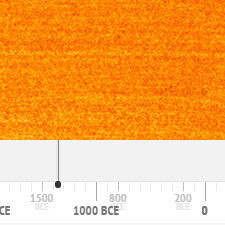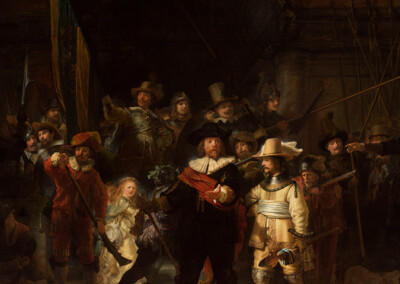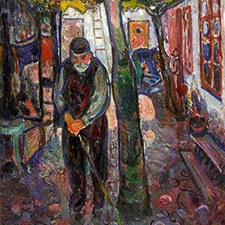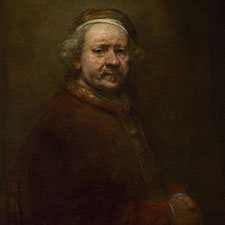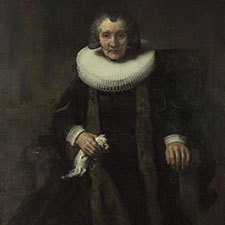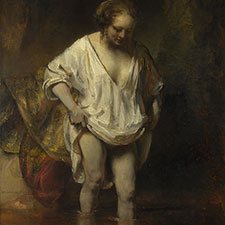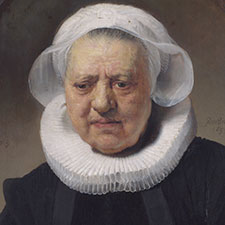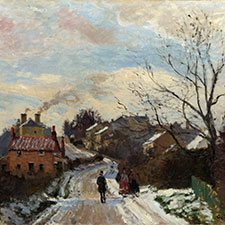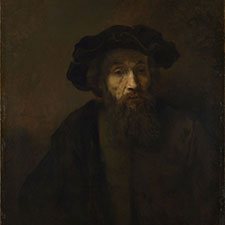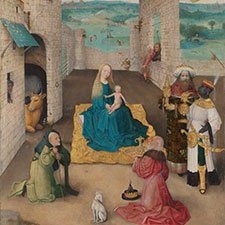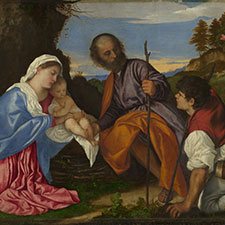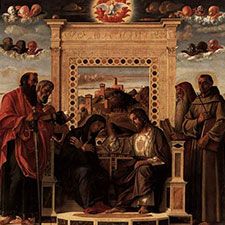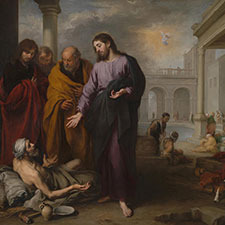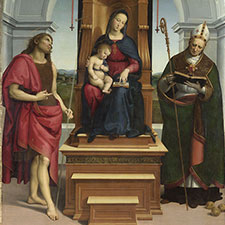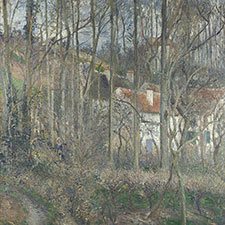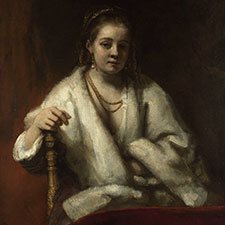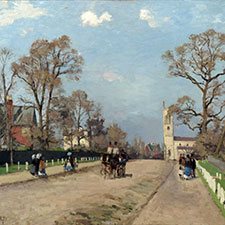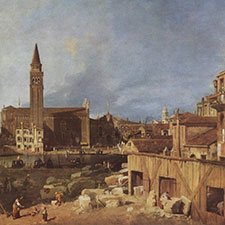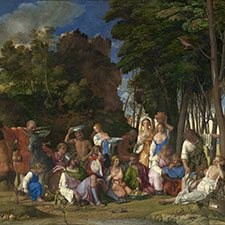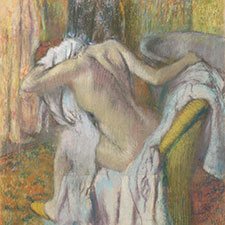Orange Ochre
Natural inorganic pigmentComposition and Properties of Orange Ochre
The main colour-giving component of natural orange ochre (ocher) is limonite which is not a single mineral but a mixture of several iron-containing minerals among them goethite, akaganeite, lepidocrocite, and jarosite, goethite (iron oxide hydroxide α-FeOOH) being the main component.
Iron oxides are stable at high temperatures but not resistant against acids. The pigment is absolutely stable as is documented by the cave paintings still in excellent condition after many thousands of years and it is also is compatible with all other pigments and is often used in mixture with several other pigments.
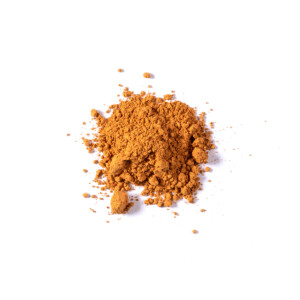
Pigment
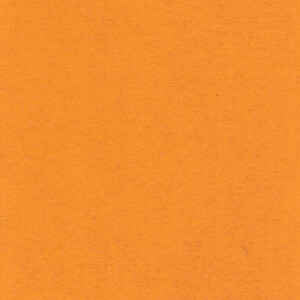
Painted swatch
References
(1) Helwig, K. Iron Oxide Pigments, in Artists’ Pigments, A Handbook of Their History and Characteristics, Volume 4, Berrie, B.H., Ed., National Gallery of Art Washington, 2007, pp 38 – 109.
(2) Mady Elias, C. Chartier, G. Prévot, C. Vignaud, H. Garay, The Colour of Ochres Explained by Their Composition
February 2006, Materials Science and Engineering B 127(1):70-80. DOI: 10.1016/j.mseb.2005.09.061
Names
Alternative names
Orange earth
Color Index
Word origin
From Old French ocre (c.1300) and directly from Late Latin ocra, from Latin ochra, from Greek ochra, from ochros “pale yellow,” of unknown origin.
From Online Etymology Dictionary
Oranger Ocker
German
Ocre orange
French
Ocra arancia
Italian
Ocre naranja
Spanish
Preparation
The natural mineral is washed in order to separate it from sand and other impurities. The resulting sludge is dried and the pigment is ground and sieved.
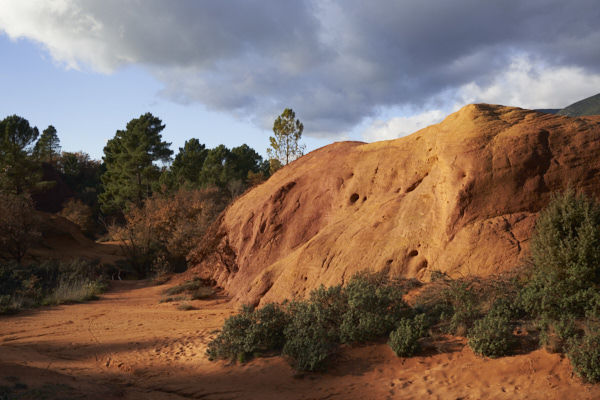
Deposit of natural orange ochre in Rustrel, Provence, France
Video: 'Ochre Pigments' by The Alchemical Arts
History of Use
The pigment had been used since prehistoric times.
Examples of use
Bartolomé Esteban Murillo, ‘Christ Healing the Paralytic at the Pool of Bethesda’, 1667-70
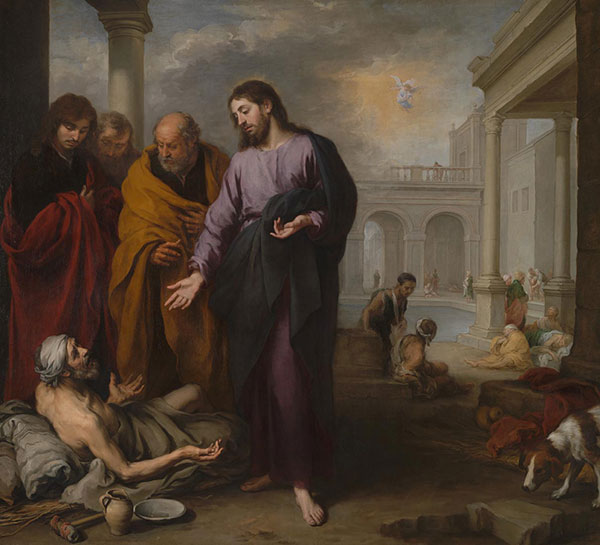
2 The yellow drapery of St Peter: several layers consisting of yellow ochre and orange ochre overpainted by a fine glaze.
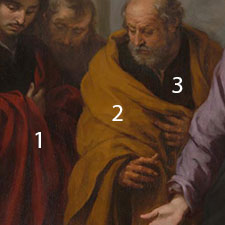
References
(1) David Hradil, Tomas Grygar, Janka Hradilova, Petr Bezdicka, Clay and iron oxide pigments in the history of painting, Applied Clay Science 22 (2003) 223–236
Identification
References
(1) Froment, F., Tournié, A., & Colomban, P. . Raman identification of natural red to yellow pigments: ochre and iron-containing ores. Journal of Raman Spectroscopy, 39(5), (2008) 560–568. doi:10.1002/jrs.1858.
(1) Kate Helwig, The characterisation of iron earth pigments using infrared spectroscopy, irug.org Postprints p. 83-92.
Further Reading
References
Helwig, K. Iron Oxide Pigments, in Artists’ Pigments, A Handbook of Their History and Characteristics, Volume 4, Berrie, B.H., Ed., National Gallery of Art Washington, 2007, pp 38 – 109.
Cornell, R. M., & Schwertmann, U. The Iron Oxides: Structure, Properties, Reactions, Occurrences and Uses. Wiley 2006.
Earth pigments tour website. It contains a colour map of many earth pigments.
Hradila, David; Grygara, Tomáš; Hradilová, Janka; Bezdičkaa, Petr. Clay and iron oxide pigments in the history of painting. Applied Clay Science 22, 2003, p. 230.
Ochres and coloured earths, Website of the French association to promote ochres and coloured earths.
Heidi Gustafson, Early Futures Ochre Archive, Website.

